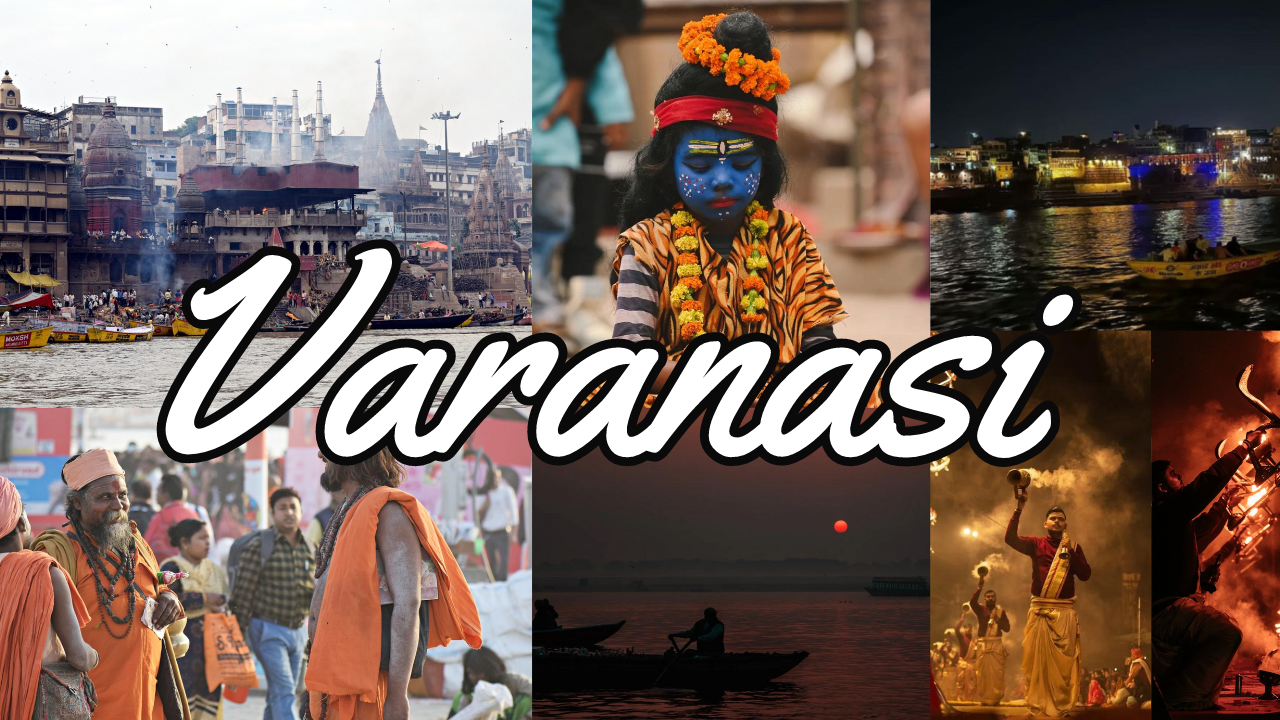
Varanasi, one of the oldest living cities in the world, is a spiritual and cultural hub in India. Nestled along the banks of the sacred Ganges River, it is renowned for its ancient temples, vibrant ghats, and rich traditions. The city holds deep religious significance for Hindus, who come from across the globe to perform rituals, seek blessings, and experience the sacred energy that permeates the air. Whether it’s witnessing the mesmerizing Ganga Aarti at Dashashwamedh Ghat or exploring the narrow alleys filled with the aromas of street food, Varanasi offers a unique blend of spirituality and everyday life. Beyond its religious significance, Varanasi is also a cultural melting pot. The city is famous for its classical music, art, and craft traditions, especially Banarasi silk, which has been cherished for centuries. Travelers, especially students and budget-friendly explorers, can immerse themselves in the local lifestyle, savoring delicious street food like kachoris and enjoying the warm hospitality of the locals. Varanasi’s timeless charm makes it a must-visit destination for anyone looking to connect with India’s deep-rooted heritage.
Lets Visit Varanasi and Know More...
Kashi Vishwanath Temple
Kashi Vishwanath Temple, located in Varanasi, India, is one of the holiest shrines dedicated to Lord Shiva and is revered as one of the twelve Jyotirlingas. This ancient temple, originally built in 1780 by Maharani Ahilya Bai Holkar, showcases stunning architecture, including its iconic gold-plated dome. The temple is not only a spiritual hub for millions of devotees who seek blessings and liberation (moksha) but also a vibrant center of cultural and religious activities. Nestled near the sacred Ganges River, Kashi Vishwanath Temple embodies deep historical significance, attracting pilgrims from around the world and serving as a symbol of resilience and devotion in the face of adversity.


Dashashwamedh Ghat
Dashashwamedh Ghat, located in Varanasi, India, is one of the most famous and significant ghats along the banks of the Ganges River. Steeped in mythology and history, it is believed to be the site where Lord Brahma performed the “Dashashwamedh Yagna” to welcome Lord Shiva. The ghat is renowned for its vibrant atmosphere, especially during the evening Ganga Aarti, a mesmerizing ritual involving hymns, lamps, and the collective devotion of countless visitors and locals. With its steps leading down to the sacred river, Dashashwamedh Ghat serves as a focal point for spiritual activities, bathing rituals, and cultural events, making it an essential part of the spiritual fabric of Varanasi. The ghat’s bustling ambiance, along with its picturesque views of the Ganges, creates a deeply moving experience for all who visit.
Sarnath
Sarnath, located just a few miles from Varanasi, India, is one of the most important Buddhist pilgrimage sites in the world. It is historically significant as the place where Gautama Buddha delivered his first sermon after attaining enlightenment, sharing the teachings of the Four Noble Truths and the Eightfold Path with his first five disciples. The site is home to several ancient monuments, including the impressive Dhamek Stupa, which marks the spot of the sermon, and the Ashoka Pillar, a symbol of peace and the foundation of Buddhism. Visitors can explore the archaeological remains, museums, and serene gardens that offer a glimpse into the rich history of Buddhism. Sarnath serves as a tranquil retreat for spiritual seekers and tourists alike, making it a vital destination for those interested in understanding the teachings of Buddha and the growth of Buddhism.

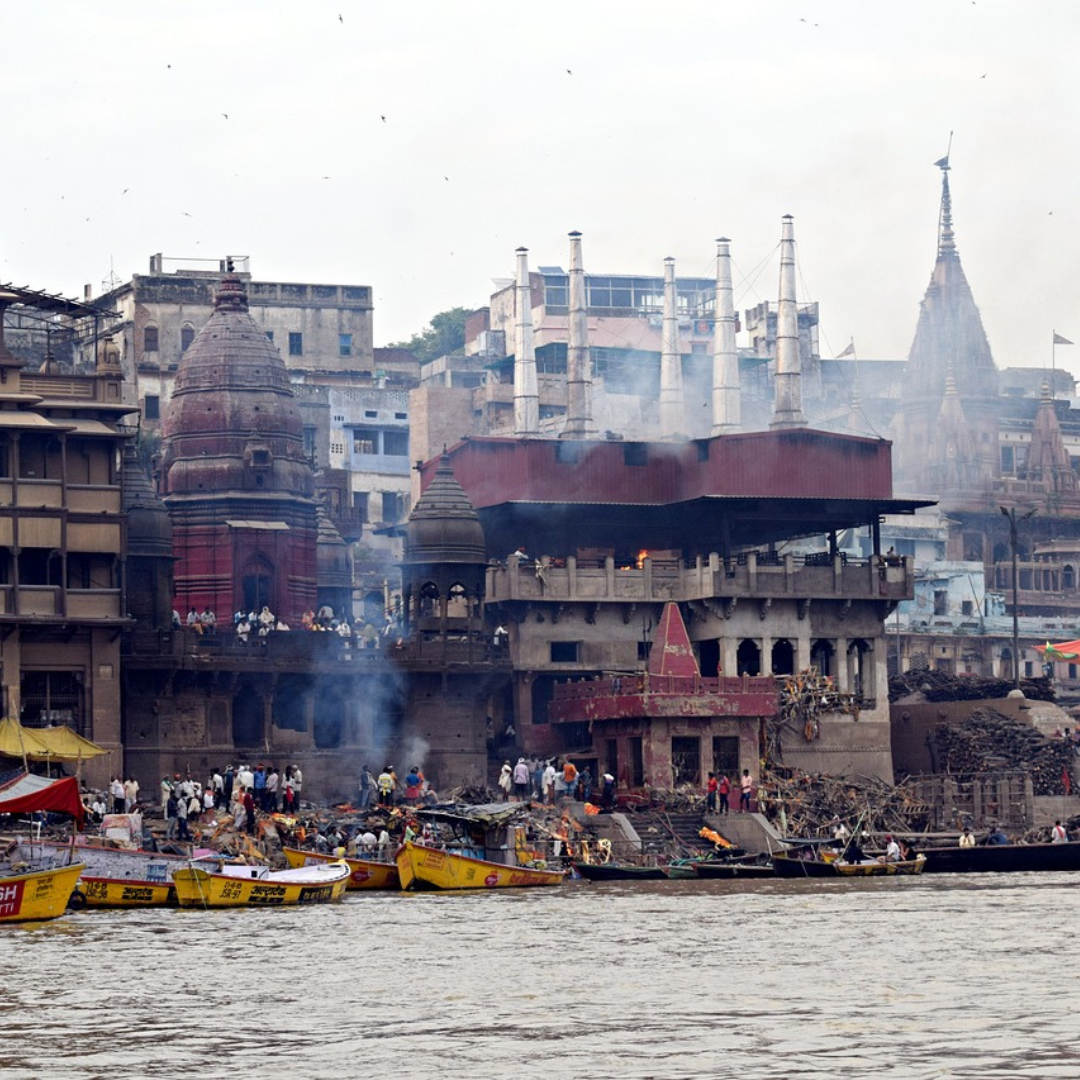
Manikarnika Ghat
Manikarnika Ghat, one of the most revered and bustling ghats in Varanasi, India, holds profound spiritual significance as a major cremation site. It is believed to be the spot where the goddess Parvati dropped her ear ornament (manikarnika) and is considered a sacred place where the dead attain moksha, or liberation. The ghat is characterized by its constant activity, with cremations taking place throughout the day and night, symbolizing the cycle of life and death. Visitors to Manikarnika Ghat can witness the rituals and ceremonies, which are steeped in tradition and spirituality. The ghat also offers a unique perspective on the beliefs surrounding death in Hindu culture, making it a poignant and thought-provoking experience for those who come to pay their respects or seek understanding of Varanasi’s rich spiritual heritage.
Ramnagar Fort
Ramnagar Fort, located on the banks of the Ganges River near Varanasi, India, is a striking example of Mughal architecture and royal heritage. Built in the 18th century by the Maharaja of Kashi, this fort served as the ancestral home of the royal family and showcases intricate carvings, ornate balconies, and stunning views of the river. The fort is renowned for its unique museum, which houses an impressive collection of vintage cars, weaponry, and artifacts reflecting the history and culture of the region. Ramnagar Fort also hosts the annual Ram Leela festival, a dramatic reenactment of the Ramayana, attracting locals and tourists alike. With its historical significance and picturesque setting, the fort stands as a testament to Varanasi’s rich royal past and cultural vibrancy.


Assi Ghat
Assi Ghat, located at the confluence of the Ganges and Assi rivers in Varanasi, is one of the most popular and vibrant ghats in the city. Known for its lively atmosphere, Assi Ghat is a favored spot for both locals and tourists, offering stunning views of the Ganges and a serene setting for spiritual rituals and ceremonies. The ghat is particularly famous for its morning boat rides and yoga sessions, where visitors can immerse themselves in the tranquil ambiance while enjoying breathtaking sunrises over the river. Additionally, Assi Ghat features the iconic Assi Shiva Lingam, a sacred representation of Lord Shiva, making it a significant site for worship. With its blend of spirituality, cultural activities, and picturesque scenery, Assi Ghat is a must-visit destination for anyone exploring the spiritual heart of Varanasi.
Bharat Mata Temple
Bharat Mata Temple, located in Varanasi, India, is a unique and revered shrine dedicated to Mother India. Established in 1936, the temple stands out for its distinct representation of the Indian nation rather than a specific deity. The centerpiece of the temple is a stunning marble relief map of India, showcasing the country’s diverse geography, including mountains, rivers, and plains. Visitors can pay their respects to the spirit of the nation, reflecting the unity and diversity of India. The temple’s architecture is simple yet elegant, adorned with symbolic motifs that celebrate Indian culture and heritage. Bharat Mata Temple serves as a poignant reminder of the country’s history and the collective spirit of its people, making it a meaningful stop for both pilgrims and tourists seeking to connect with India’s identity.


Tulsi Manas Temple
Tulsi Manas Temple, situated in Varanasi, India, is a beautifully constructed shrine dedicated to Lord Rama, embodying the essence of devotion and cultural heritage. Built in 1964, the temple is renowned for its exquisite marble architecture and intricately carved walls that depict scenes from the epic Ramayana, particularly emphasizing the teachings of Tulsidas, the revered poet-saint who composed the Ramcharitmanas. The temple’s serene atmosphere and lush gardens make it a peaceful retreat for visitors seeking spiritual solace. The vibrant prayers and devotional activities held here attract both locals and tourists, allowing them to immerse themselves in the rich spiritual traditions of Hinduism. Tulsi Manas Temple stands as a testament to the enduring legacy of Lord Rama and the timeless relevance of his teachings in the modern world.
Alamgir Mosque
Alamgir Mosque, also known as the Alamgir Masjid, is a prominent historical site located in Varanasi, India. Built in the 17th century by the Mughal Emperor Aurangzeb, the mosque is an exquisite example of Mughal architecture, featuring elegant domes, towering minarets, and intricate carvings that reflect the artistry of the period. The mosque is situated near the banks of the Ganges River and is known for its serene ambiance, making it a significant place for both worship and reflection. Its spacious courtyard and grand entrance draw visitors who admire the harmonious blend of religious and cultural influences. Alamgir Mosque holds historical significance not only as a place of Islamic worship but also as a symbol of the Mughal era’s architectural brilliance in Varanasi, attracting both pilgrims and tourists alike.


Banaras Hindu University (BHU)
Banaras Hindu University (BHU), located in Varanasi, India, is one of the largest and oldest residential universities in Asia, founded in 1916 by the visionary Pandit Madan Mohan Malaviya. Renowned for its academic excellence and cultural diversity, BHU offers a wide range of undergraduate, postgraduate, and doctoral programs across various disciplines, including arts, sciences, engineering, and social sciences. The campus, sprawling over 1,300 acres, features impressive architecture, lush gardens, and several research institutes, creating a vibrant environment for learning and exploration. BHU is not only a center for higher education but also a hub for cultural activities, promoting values of harmony and knowledge. With its rich history and commitment to social and educational development, BHU continues to play a pivotal role in shaping the future of its students and contributing to India’s intellectual landscape.
Must Try Food

Kachori-Sabzi
A spicy breakfast dish available at local eateries.

Banarasi Paan
A traditional betel leaf preparation that's a local specialty.
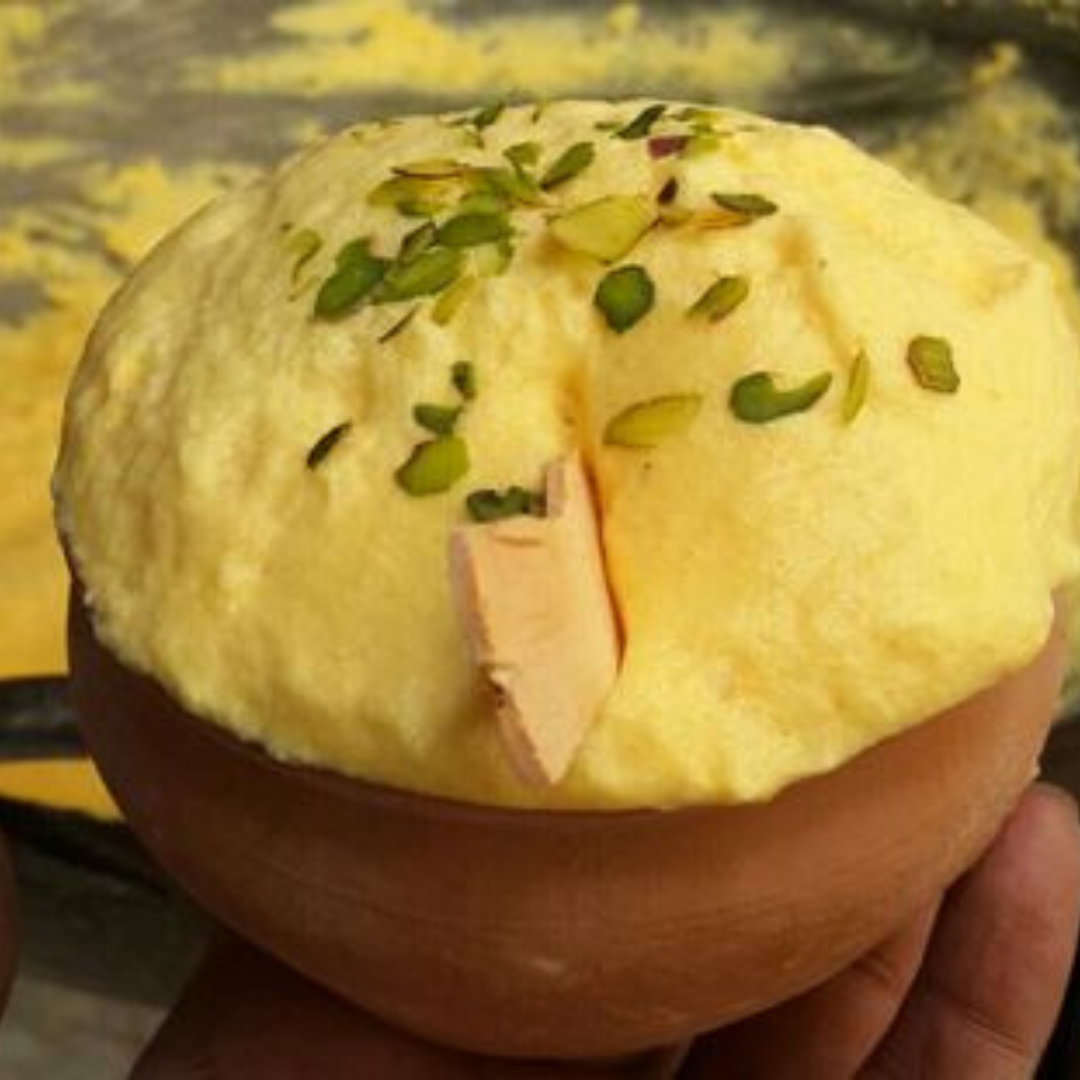
Malaiyyo
A sweet winter delicacy made of milk froth, flavored with saffron and cardamom.

Tamatar Chaat
A unique chaat dish made with tomatoes, spices, and tangy chutneys.
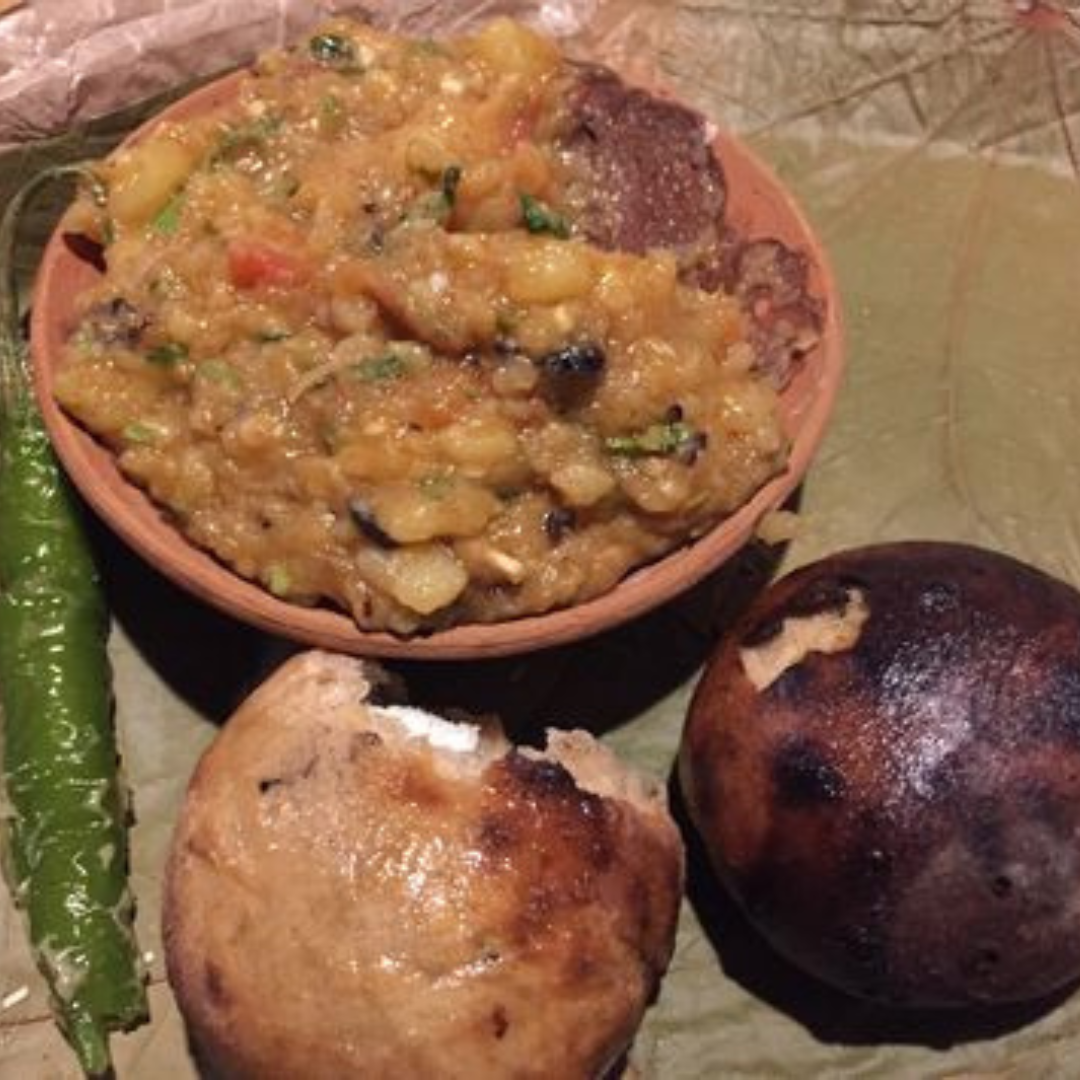
Litti Chokha
A Bihari dish that's equally popular in Varanasi, consisting of roasted wheat balls stuffed with spiced gram flour, served with mashed vegetables.

Chena Dahi Vada
Soft dumplings made of chena (fresh cheese) soaked in yogurt, with a sweet and tangy tamarind chutney drizzled over them.

Thandai
A traditional cold drink made with milk, almonds, and a mix of spices. The special version is the Bhang Thandai, infused with cannabis during festivals like Holi.
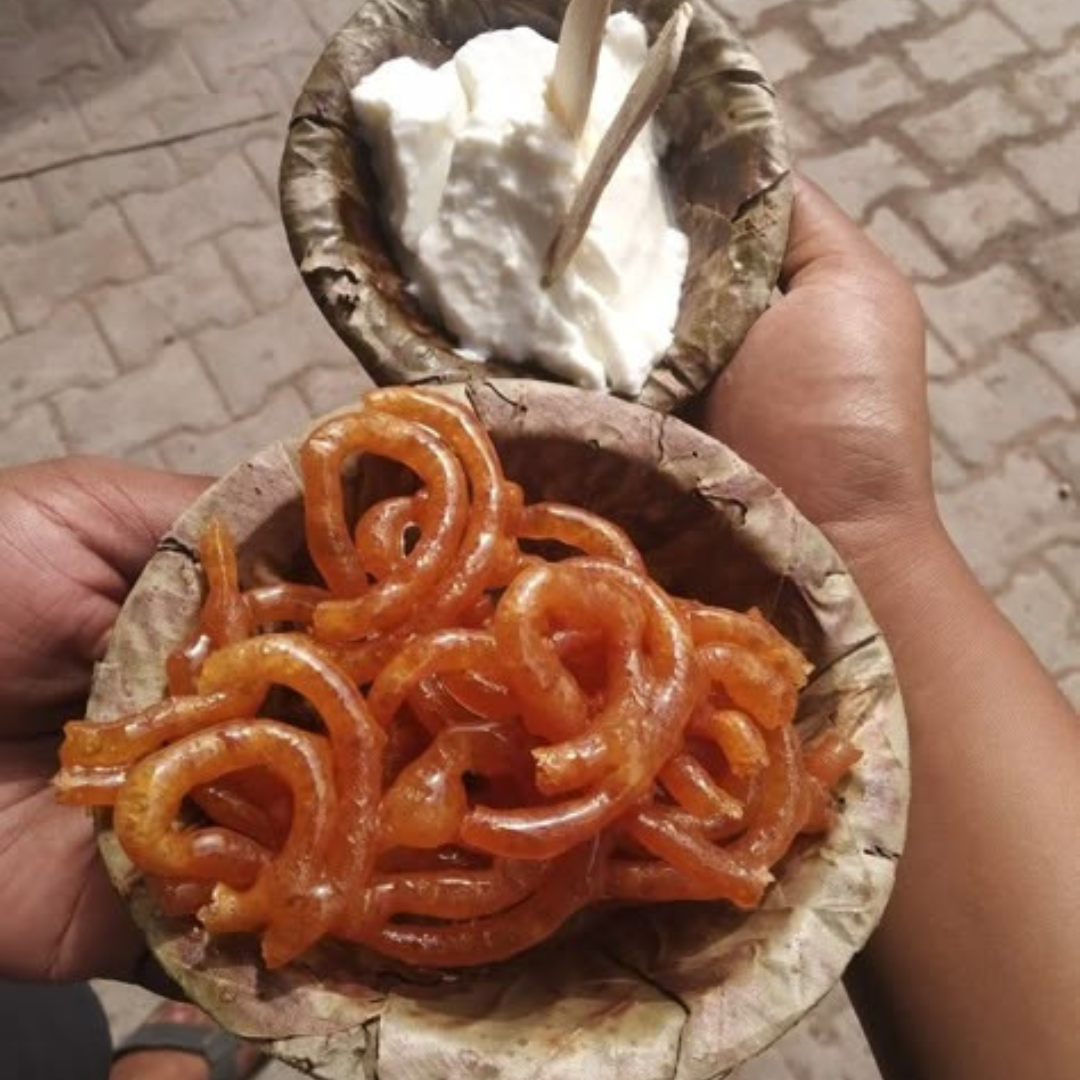
Jalebi
Freshly fried spirals of sweet dough soaked in sugar syrup—best enjoyed piping hot in the morning.

Rabri
A rich, creamy dessert made from thickened milk, garnished with saffron and pistachios, usually served chilled.
SHOPPING

Godaulia Market
Known for silk sarees, brassware, and religious artifacts.

Thatheri Bazaar
Famous for handloom textiles and traditional Banarasi sarees.

Vishwanath Gali
A bustling alley with local handicrafts and souvenirs.

Rajan Silk Market
Specializes in authentic Banarasi sarees, shawls, and fabrics with beautiful embroidery.

Golghar Market
A lesser-known gem for those looking for ethnic clothes, embroidered fabrics, and traditional ornaments.
